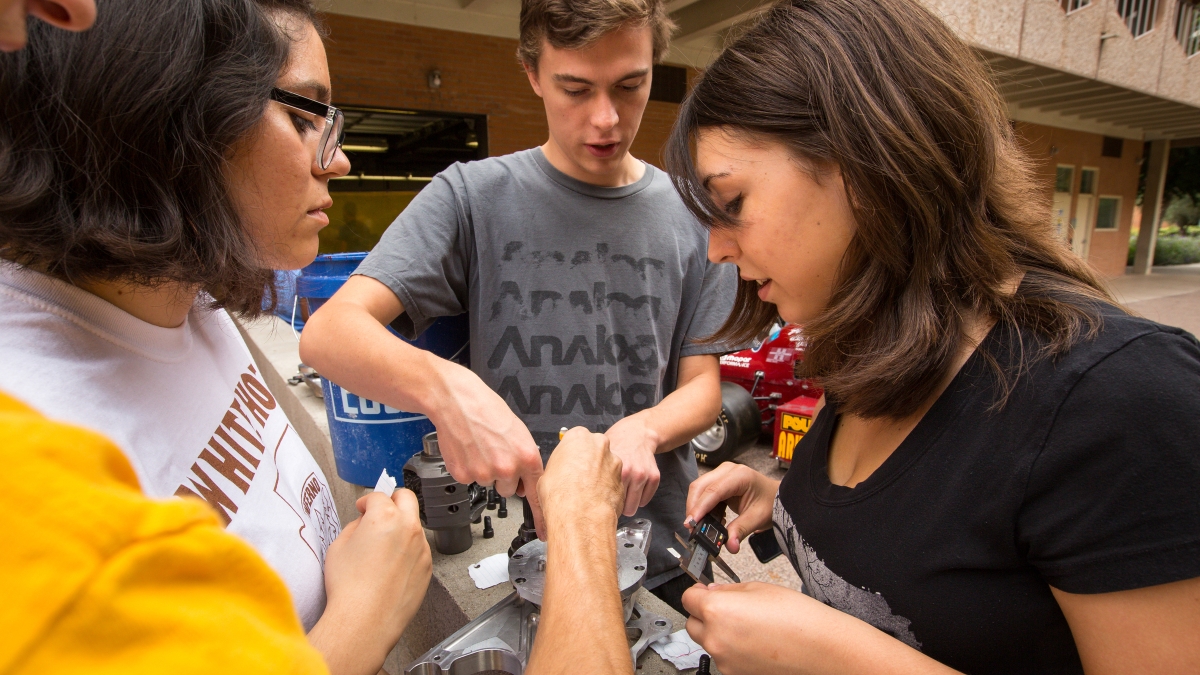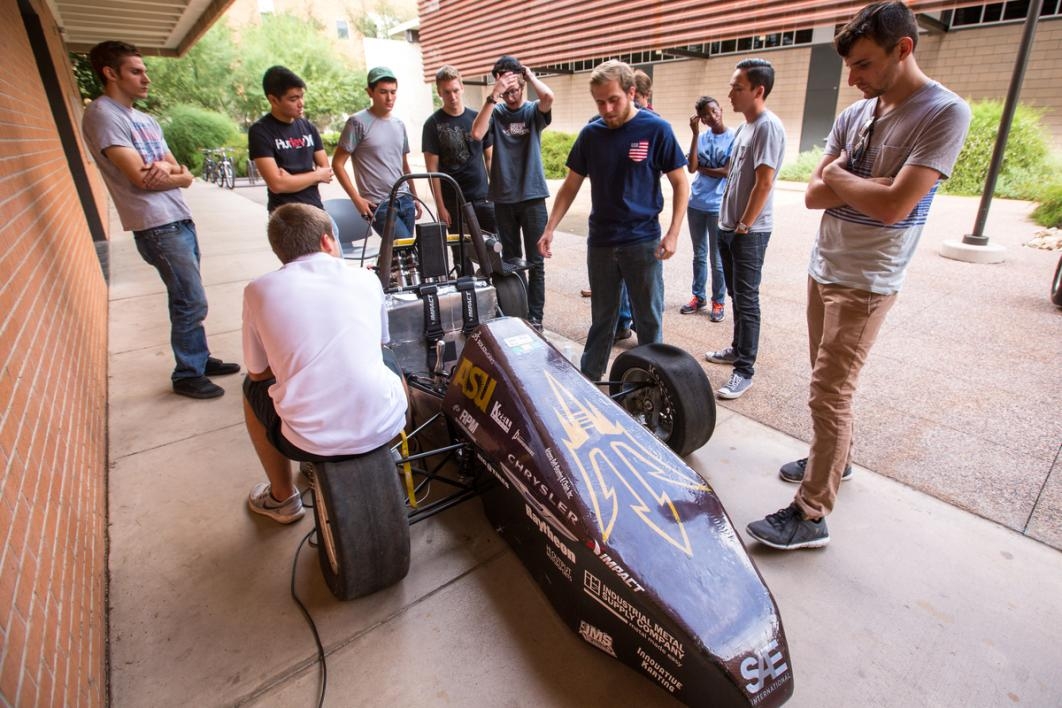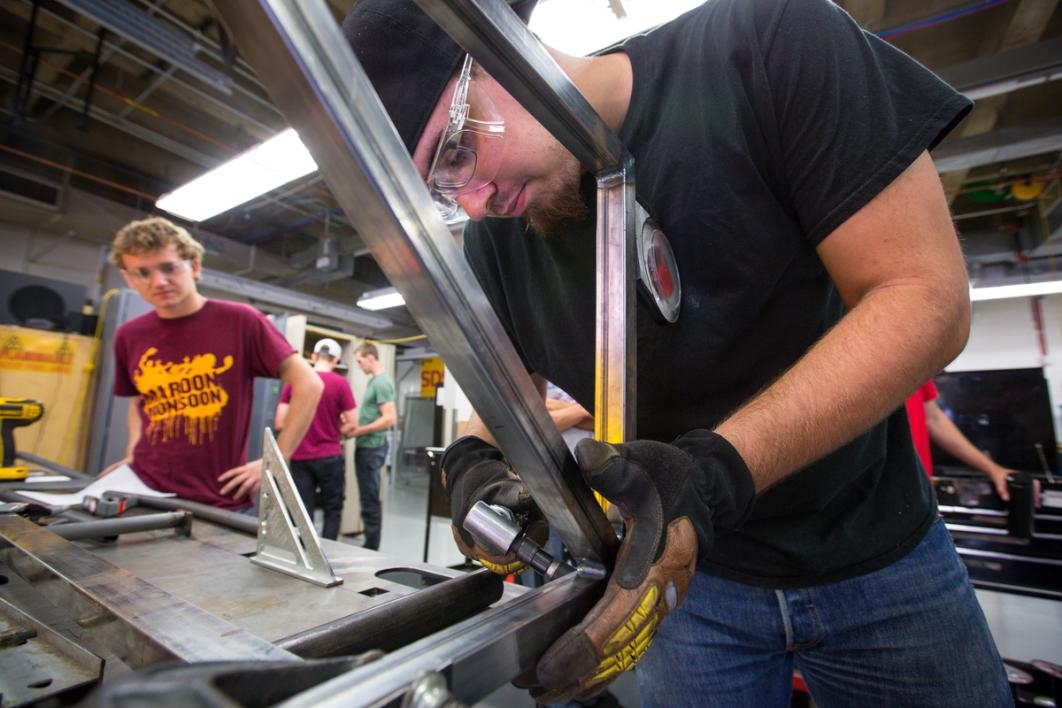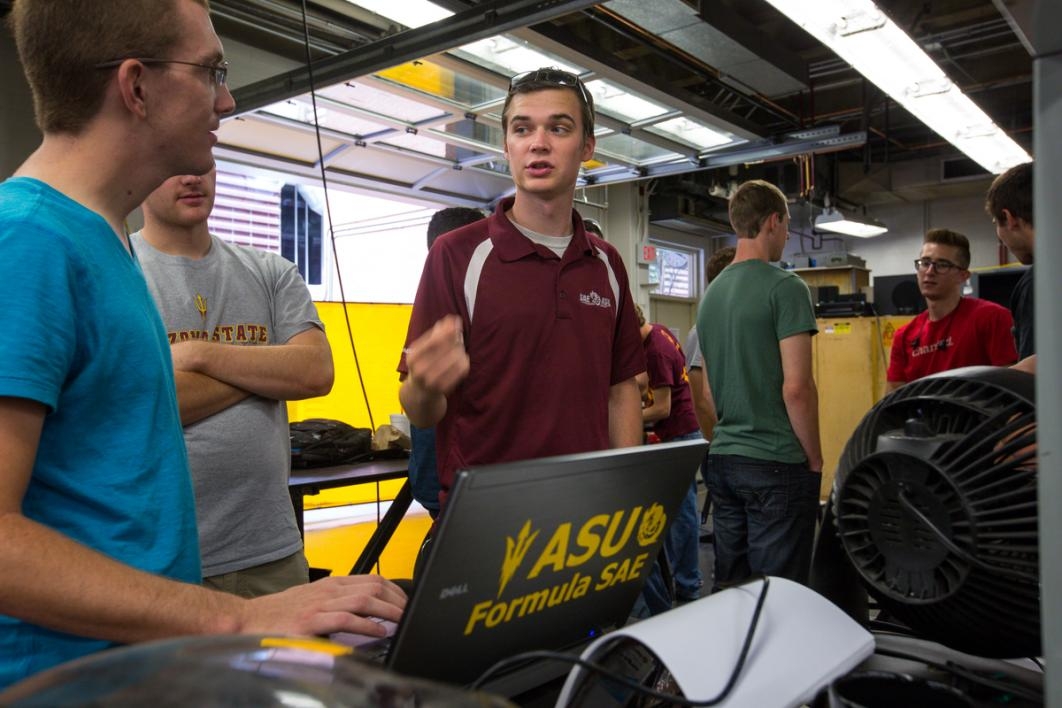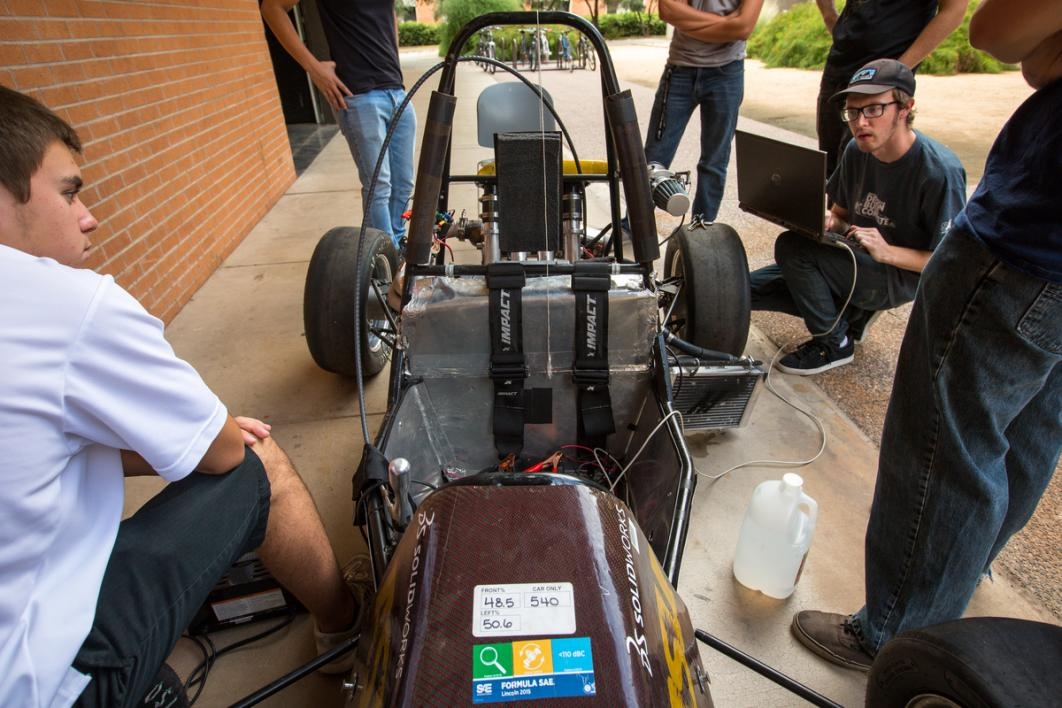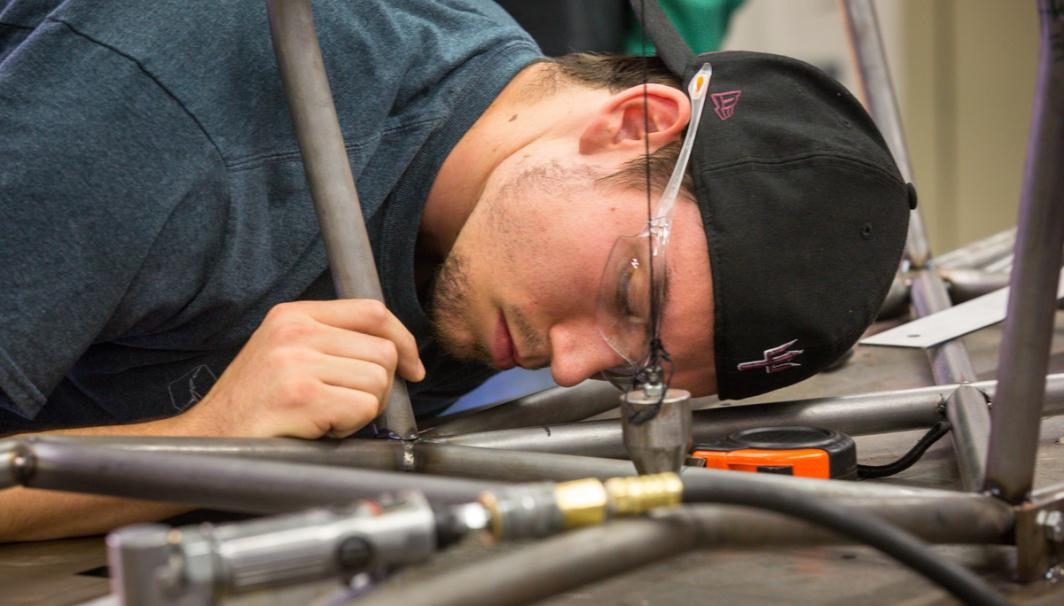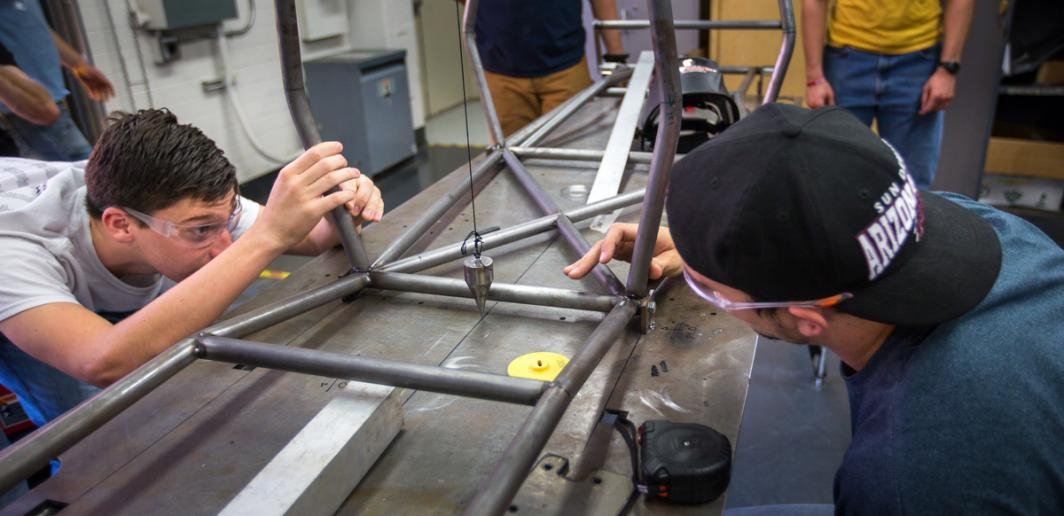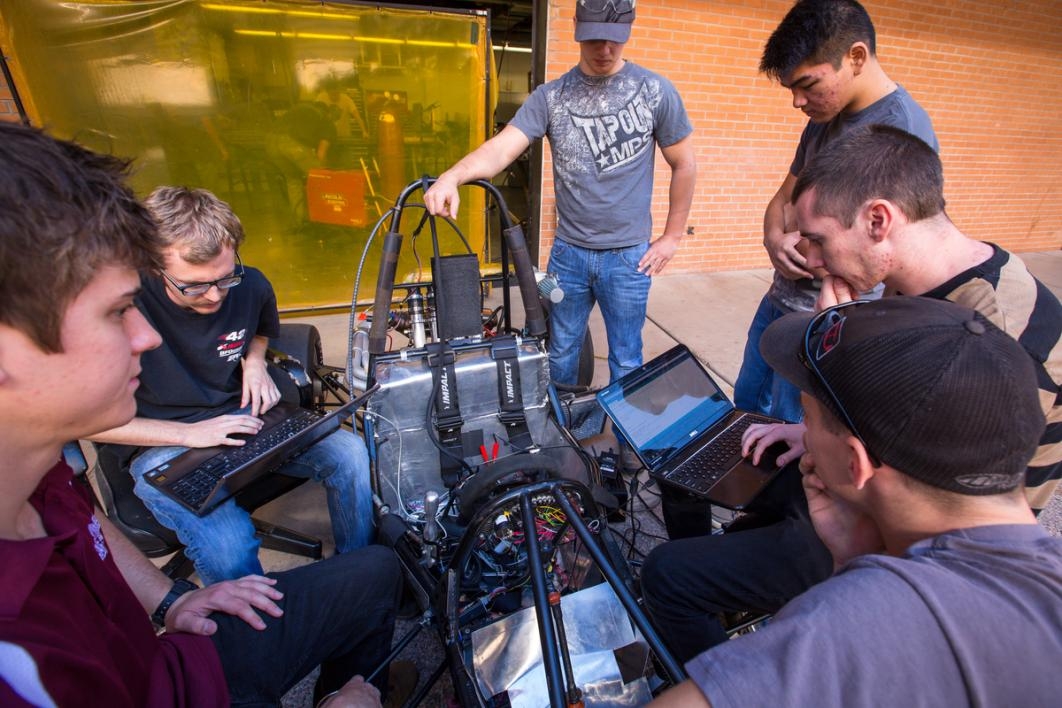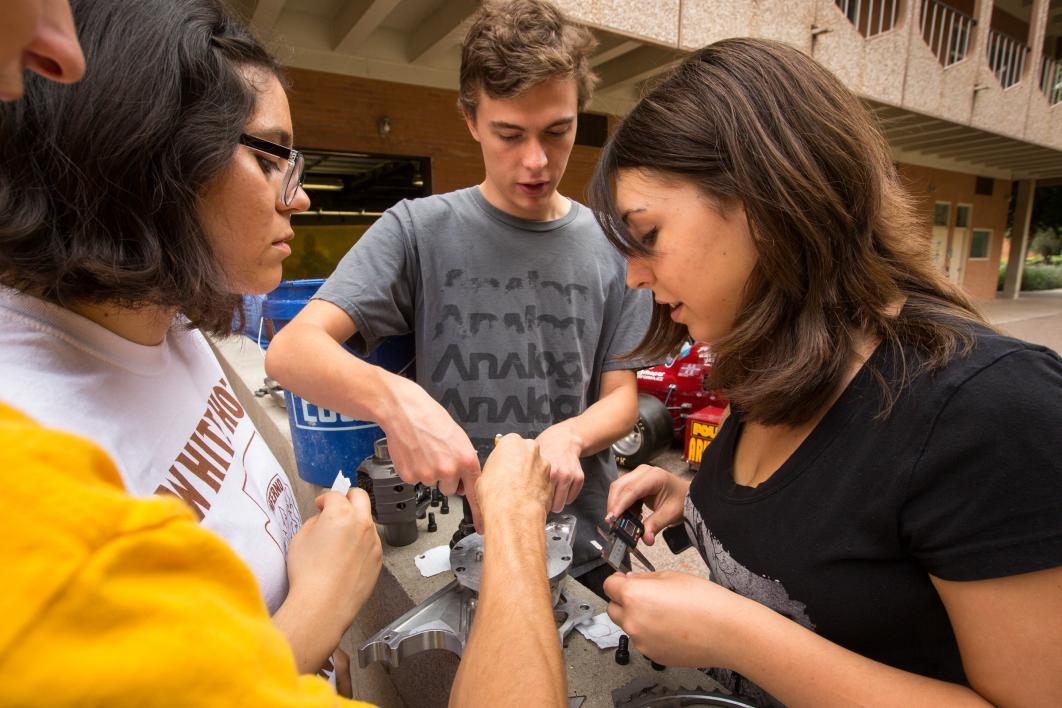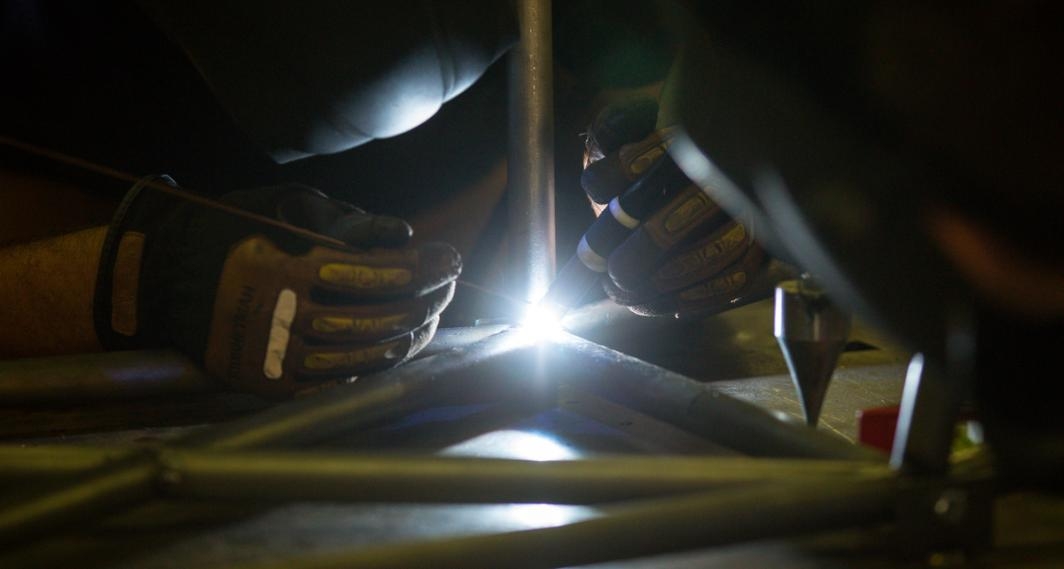Editor’s note: This is the latest installation in a yearlong series about ASU's Formula SAEFormula SAE is a student design competition organized by the International Society of Automotive Engineers (now known as SAE International). team. Read the first story here.
If the Arizona State University engineering students building a Formula-style race car wanted a challenge, they’ve got a hefty one in front of them trying to make the deadlines to get it into the national competition in June.
For the design, management and costs of building this SDM-15 (Sun Devil Motorsports) racer, they’re on their own. Two of those three aren’t a problem.
Like so many things in life, the biggest issue they’re facing is financial. The racer will cost about $38,000 to create.
“Our theme is that we’re low on money,” said team manager Troy Buhr. “As of this moment we have $600 in the bank.”
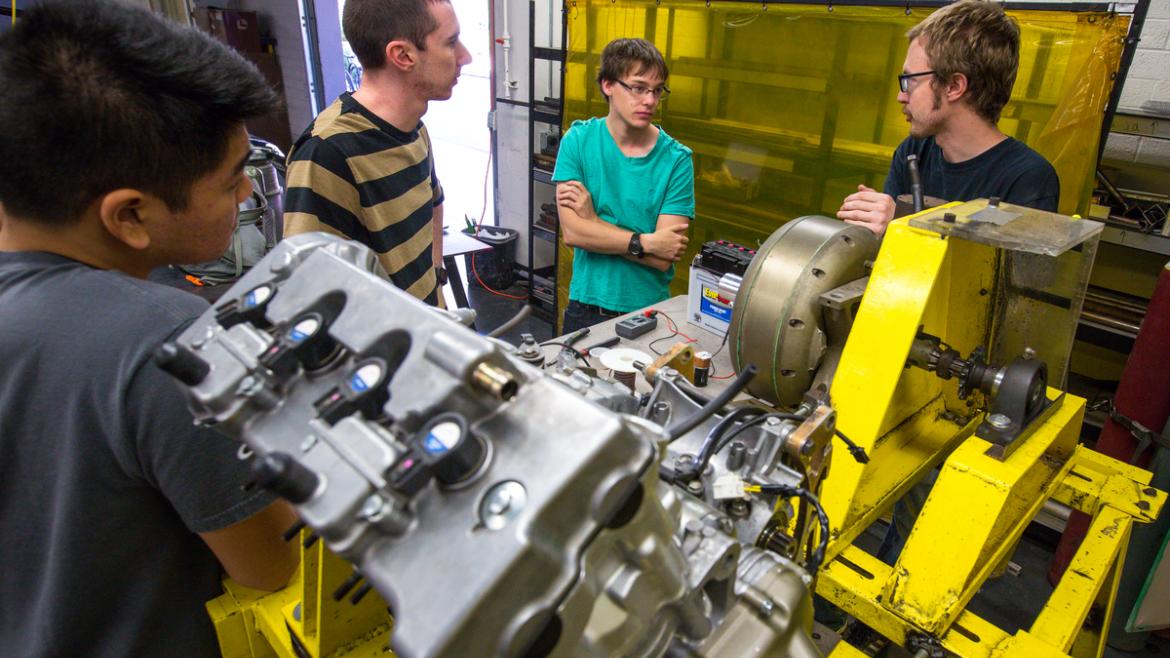
Mechanical engineering senior Andrew Shapiro (right) gives guidance to ASU Formula SAE team members Martin Morrow (green shirt) and Michael Walker, as Jeremiah Leynes looks on.
Photo by Charlie Leight/ASU Now
For perspective, tires can cost more than $400 each. Racing engine control units can cost well more than $1,000. And the costs go on and on.
“I think the main idea is we know what we want to do, but as soon as we get the money we spend it,” said chief engineer Wes Kudela.
To help solve that problem, the members of ASU's Formula SAE team — made up of students in the Ira A. Fulton Schools of Engineering — have learned what the business world knows so well: When there’s a problem you can’t handle, call in consultants.
The team has recruited five students from the W. P. Carey School of Business majoring in subjects like business management. The business majors meet weekly with the engineers.
“It’s awesome to have them in here,” Buhr said. “They think completely differently than us. It’s young right now, but I like the way it’s going.”
“A lot of them love cars.”
Building the SDM-15 is a quest for a simplistic car that is durable and handles well. They want it to be lightweight but stiff in the chassis, braking system and suspension.
“The build is going great,” Kudela said.
And managing the project is going smoothly. The goal to have all 110 team members involved as much as possible is progressing well.
“We’re seeing 50 to 60 guys come in and get their hands dirty every weekend,” Kudela said.
“We’ve never had this much momentum, and it’s good to see people excited,” said team captain Pranav Mamidi. However, he said, “we’ve always lagged in the business department.”
Raytheon donated $2,000 to the Ira A. Fulton Schools of Engineering, but it had to be split with the SAE Aero Design team. Tempe-based Trimble Consulting Inc., a technical, business and educational services consulting company, donated $750. Ford Motor Company gave $2,500. “We showed them the chassis and the shop, and they were impressed,” Mamidi said.
Team members are talking with possible sponsors including Chrysler, Avnet and Boeing. “We’ve also been compiling a list of potential local sponsors,” said Mamidi, referring to businesses such as car dealerships.
One of the engineering challenges is balancing structural integrity with weight.
“We know we’re going to be testing really hard,” Kudela said.
The base rails on the chassis are perfectly straight, which is important because everything else goes on top of them. The team doesn’t have a fixture table, which is perfectly flat and used in welding and assembly. “We have to spend a lot of time getting the chassis straight on it,” Kudela said.
The chromoly tubes have been tacked together, but not yet fully welded. The car will flex when it’s eventually built and unclamped from the table. Because heat from welding can deform metal, it could create a crooked car, so the chassis will be fully welded later.
The computer-aided design model has been completed. The pedals have been designed. The team has chosen a foot clutch instead of a hand clutch because it will be more natural to drive.
“We are working on designing a steering rack,” Kudela said. A manufactured steering rack won’t be ready by their January goal to complete the car. Last year they literally finished the car in a parking lot in Lincoln, Nebraska, where the national competition is held. This year they want the car completed in January so they can test and improve it.
The team has also decided to use braided brake lines. Hard brake lines are more durable. Braided brake lines are easier to route through the car, but they flex under pressure. To justify using them, they had to prove the braided lines don’t deform or move under the pressures they’re using. So they tested the lines and proved them acceptable. That’s one type of detail they will be judged on at the national competition in June.
“We want to build from a durability standpoint,” Kudela said.
The team needs to purchase an engine control unit, a small computer that optimizes engine performance. Like most of what they need, the unit can’t be found at a local Auto Zone store. It has to be purchased from a specialty vendor.
They are working on the aero kit, calculating cooling capacity of the radiator in a carbon fiber side pod. If the hole in the front of the side pod is big, it cools the engine down a lot more, but it also slows the car down. “We’re doing extensive calculations on that,” Kudela said.
There is some debate about one radiator side pod vs. two. A car with two side pods will look more balanced, but “sometimes asymmetry can be cool,” Mamidi said.
This isn’t a go-kart being built; it’s a four-cylinder engine Formula-style car, and it’s going into national competition where the big automakers will all have scouts watching.
Future jobs are on the line here.
Video by Ken Fagan/ASU Now
To support the ASU Formula SAE team, click here, then select the “write-in” circle in the “supporting” category and enter the following in the box: "ASU-Society of Automotive Engineers 30006731".
Look for the next installment in our story series Nov. 24.
More Science and technology

Turning up the light: Plants, semiconductors and fuel production
What can plants and semiconductors teach us about fuel production?ASU's Gary Moore hopes to find out.With the aim of learning how to create viable alternatives to fossil-based fuels, Moore — an…

ASU technical innovation enables more reliable and less expensive electricity
Growing demand for electricity is pushing the energy sector to innovate faster and deploy more resources to keep the lights on and costs low. Clean energy is being pursued with greater fervor,…

What do a spacecraft, a skeleton and an asteroid have in common? This ASU professor
NASA’s Lucy spacecraft will probe an asteroid as it flys by it on Sunday — one with a connection to the mission name.The asteroid is named Donaldjohanson, after Donald Johanson, who founded Arizona…


